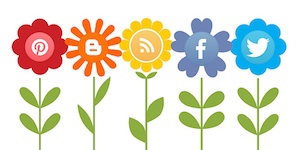
Photo Credit: Rosaura Ochoa via Compfight cc
Ahead of its IPO, Twitter last week rolled out a new feature: pictures directly uploaded via Twitter and Vine vids would start appearing in timelines (as opposed to just being links you had to click to view).
Immediately the cynics could be heard voicing their displeasure about the Twitter newsfeed photos — it seemed (to them) to be a suspicious way of allowing… marketing! (shocking!) into the timeline. A good summation of this position can be found in a well-written post by Matthew Ingram on Gigamon (“Twitter pulls a Facebook, fills your stream with photos and videos — but will it help or hurt?“).
I don’t really have a problem with Ingram’s analysis, that this move by Twitter was done with an eye on making the platform seem more marketing friendly. But … after tooling around my own timeline to see what images were now showing up, I reached two conclusions.
The first conclusion is that Twitter’s move to include the photos and Vines in the newsfeed is as much about encouraging better content and originality as it is about advertising and marketing. Marketers who don’t understand this may end up on the losing side of this change.
I also think this is about bringing users who are accustomed to using Twitter clients such as Hootsuite “back to the app” — a tricky move considering how tied Twitter is to its ecosystem of platforms. I certainly hadn’t stepped out of the confines of Hootsuite (which I use) to view a timeline so much as I have recently
When I heard of the in-stream picture feature, I went and looked at my timeline. I discovered something immediately: there were fun, original photos … and there was crap. Guess who I immediately unfollowed? Someone who had posted the same picture over and over of some crappy book they were selling got the boot, immediately.
If a Twitter photo looked like it was something an actual person might take — it got my attention. The more relevant and original the photo, the more positive my immediate reaction. I suspect I’m not alone in this.
So let this be a warning to any and all marketers: The medium defines the FORM and STYLE of the message. Uploading pics that seem … for lack of a better word … “markety” and very advertising-like are not going to be well liked. On the other hand, images that look original and connect in relevance to the user are another matter.
This is actually a part of a by-now age old story in social media marketing: quality matters. As does originality. And of course, relevance.
So is this really all about advertising/marketing? I’m going to split the baby on this issue. I think it’s very important for Twitter to up its game with visuals, imagery and video regardless of its attraction to marketers/advertisers. It’s simply the smart move for Twitter to move in this direction. Do people really care which platform delivers images that they like? Sure, some people might — but I certainly don’t care.
On a side note … I’m still surprised Twitter cards are not more popular — and Twitter could have done a TON more with this feature … but that’s another story.

